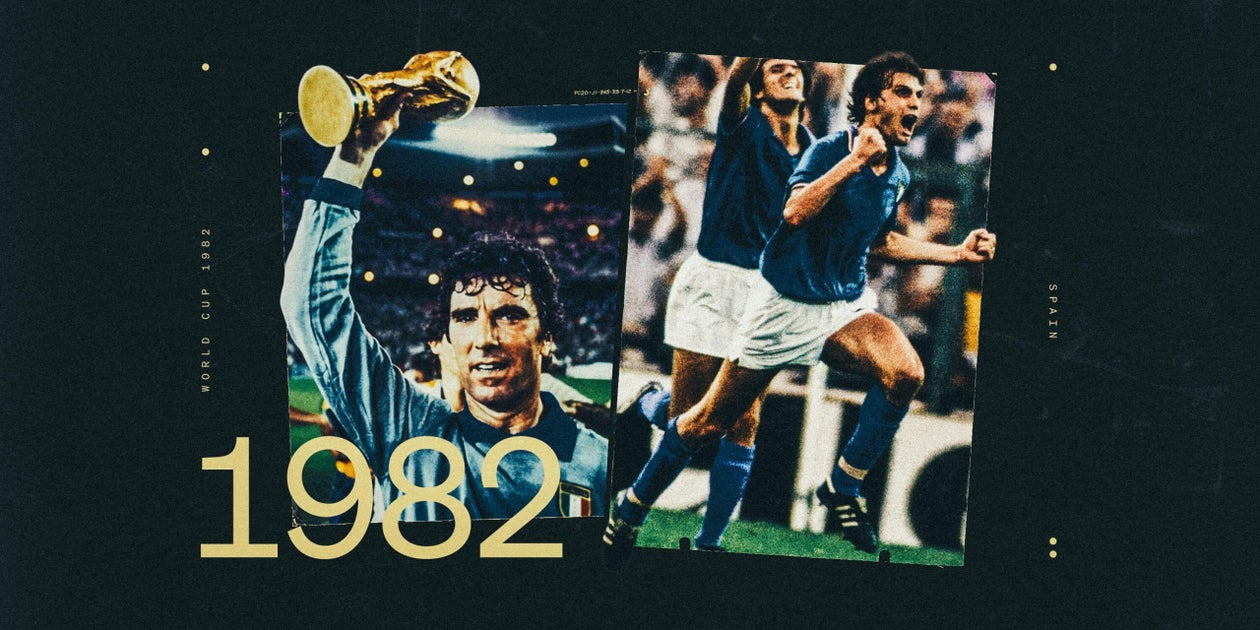This is the 12th in a series by The Athletic looking back at the winners of each men’s World Cup.
Previously, we’ve looked at Uruguay in 1930, Italy in 1934 and again in 1938, Uruguay in 1950, West Germany in 1954, before a Brazilian double in 1958 and 1962, an England success in 1966, another Brazil win in 1970, a second West Germany triumph in 1974, and Argentina’s long-awaited win in 1978. In 1982, Italy matched Brazil’s three World Cup wins, and this is how they did it.
Introduction
One of the cliches about Italy going into every World Cup — if they qualify — is that they are ‘traditionally slow starters’.
But Italy had won their opening game of the 1966, 1970, 1974 and 1978 tournaments. In fact, in 1978, they started very strongly before tailing off. Really, the cliche stems from World Cup 1982 in Spain.
And it really was extreme. A goalless draw with Poland was followed by a flat 1-1 draw with Peru, and another unconvincing 1-1 draw against Cameroon, meaning Italy were fortunate to progress from the group stage on goals scored. At that point, the idea of them winning the World Cup was absurd.
But then, in the second group phase — consisting of four groups of three, in the first 24-team World Cup — Italy exploded into life despite a very tough draw, defeating holders Argentina and favourites Brazil.
When the knockout stage eventually arrived, they got past European opposition, in Poland and West Germany, with relative ease.
You might be surprised to learn…
Italy were hugely unfancied going into the tournament, having only finished second in their qualification group behind Yugoslavia and losing to France and East Germany in friendlies. Bookmakers had them as 18-1 seventh-favourites amid serious questions over a couple of key players. World Soccer magazine considered that they “face the real threat of first round elimination” in its tournament preview.
West Germany and Brazil were considered the favourites, while Argentina were not merely defending champions, they’d also unearthed Diego Maradona, who was already being spoken about as the world’s best player.
There have been major shocks in World Cup finals — 1950 and 1954 in particular — but considering the tournament hasn’t produced anything like a Denmark 1992 or a Greece 2004, this is probably the World Cup’s biggest underdog triumph, despite Italy’s considerable footballing heritage.
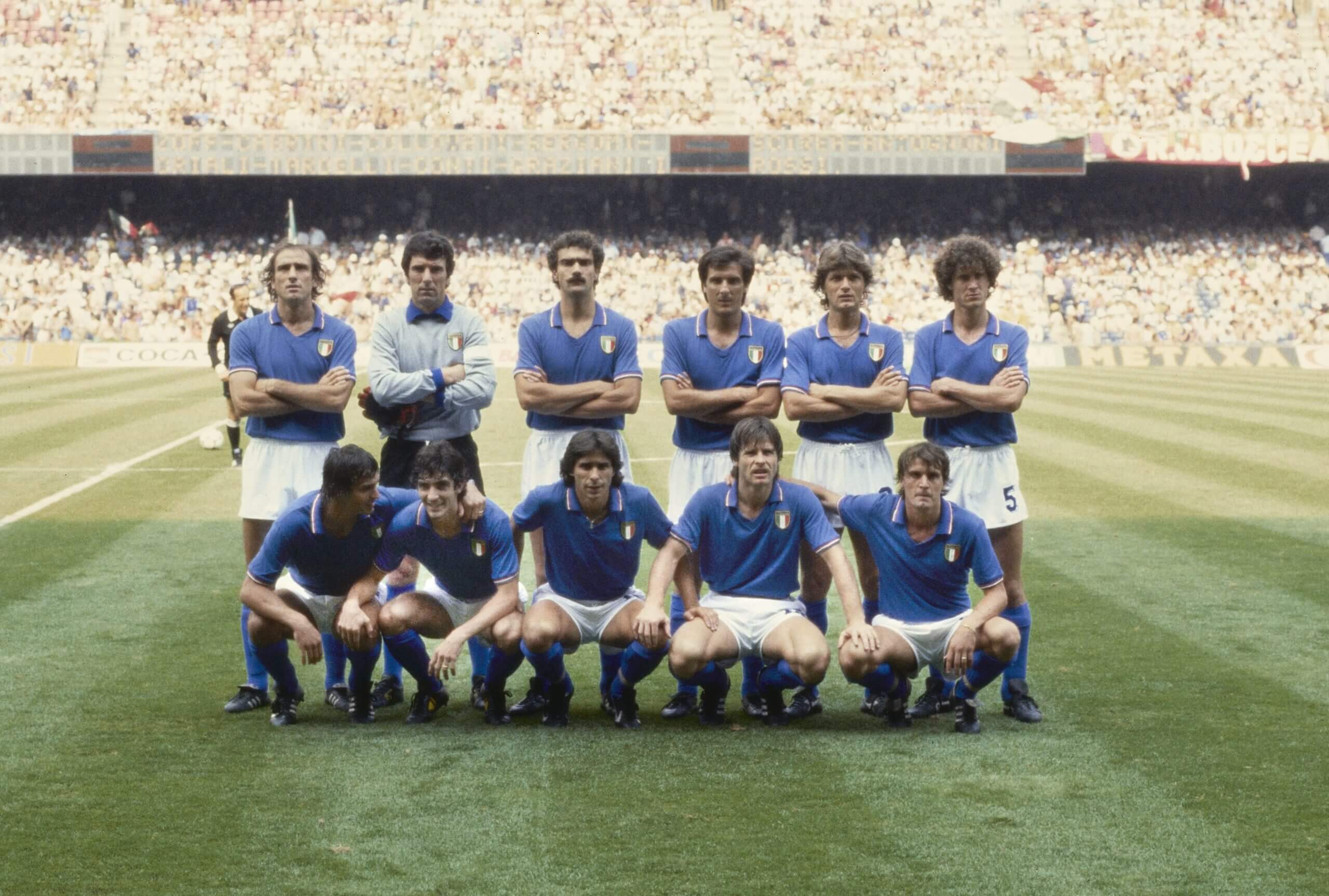
Italy line up ahead of their semi-final game with Poland in Barcelona (Duncan Raban/Allsport/Getty Images/Hulton Archive)
The manager
In some ways, Enzo Bearzot was a classic Italy manager: a former international himself, a dedicated smoker, a tactician more than a coach. In other ways, he felt different: Bearzot was more of a father figure than an authoritarian, he gave his players a fair amount of freedom, and he liked attacking football, having been inspired by the Total Football of the previous decade.
Bearzot had worked for the Italian federation as under-23 manager and as assistant to both Ferruccio Valcareggi and Fulvio Bernardini, before taking charge in 1977. Italy’s performance at World Cup 1978 and Euro 1980 on home soil was decent enough, but their sluggish form going into the tournament meant he was mercilessly mocked in the Italian press. He was criticised so heavily during the initial group phase that he imposed a complete media blackout for the rest of the competition, with him and his players simply refusing to speak to journalists.
That approach seemed to be successful, cultivating an ‘us against them’ mentality. Italian journalists were forced to eat their words by the end of the tournament.
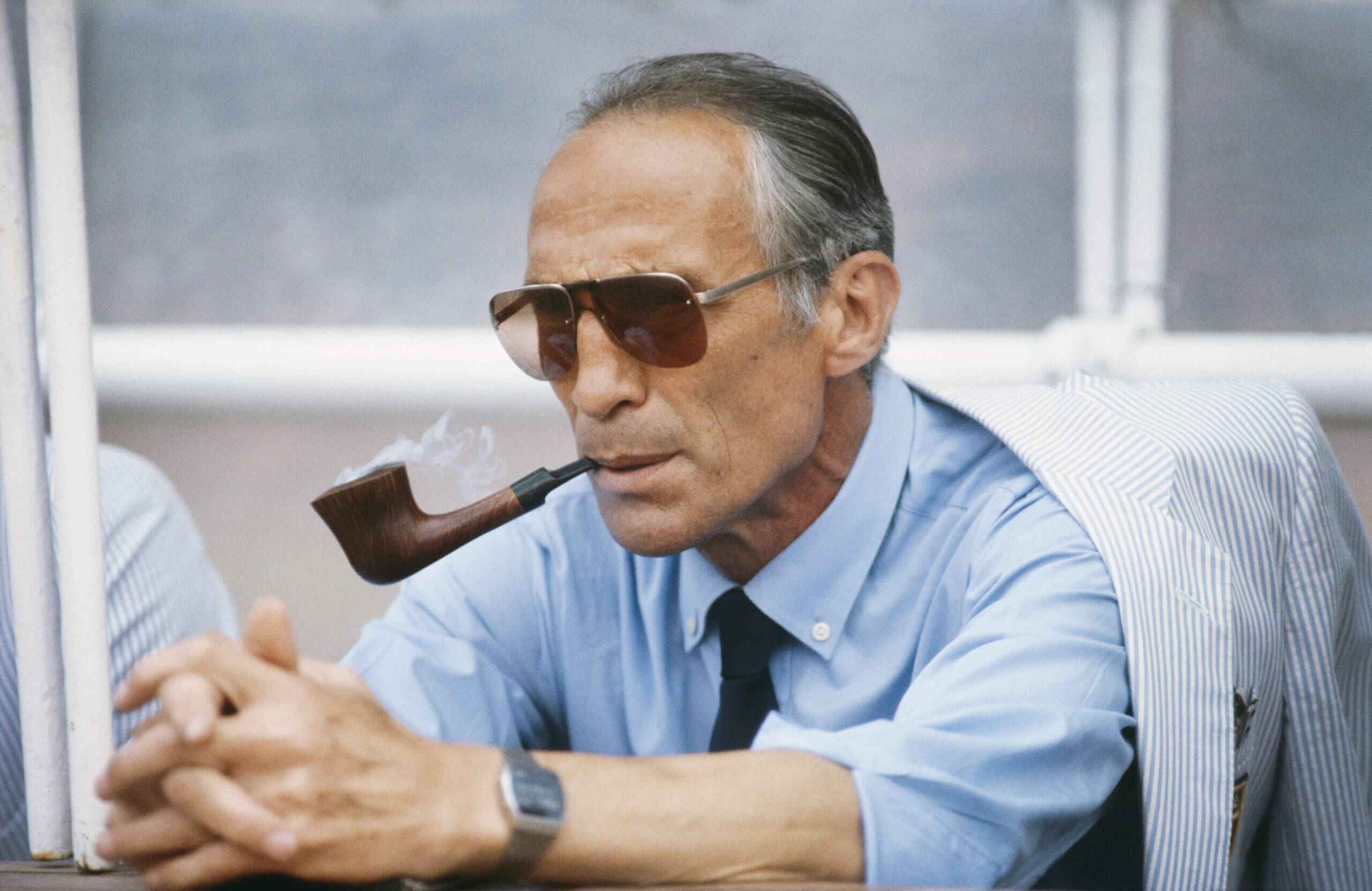
Italy manager Enzo Bearzot, pictured during the 1982 World Cup (Duncan Raban/Allsport/Getty Images)
Star player
There is a slight irony in the fact that at a time when football was becoming concerned at the dominance of systems over the star power of individuals, this was actually the period in World Cup history where three straight tournaments were overwhelmingly dominated by one man. In 1978, it was Mario Kempes. In 1986 — spoiler alert — it was Maradona. And in 1982, it was Paolo Rossi, which had seemed highly unlikely going into the tournament.
Rossi was Italy’s golden boy and had performed impressively at World Cup 1978, scoring three goals. But Rossi was involved in the Totonero match-fixing scandal, which came to light in 1980. He was handed a three-year ban, later reduced to two years on appeal. Rossi protested his innocence and claimed he was punished so strictly because of his prominent role in Italian football, to make an example.
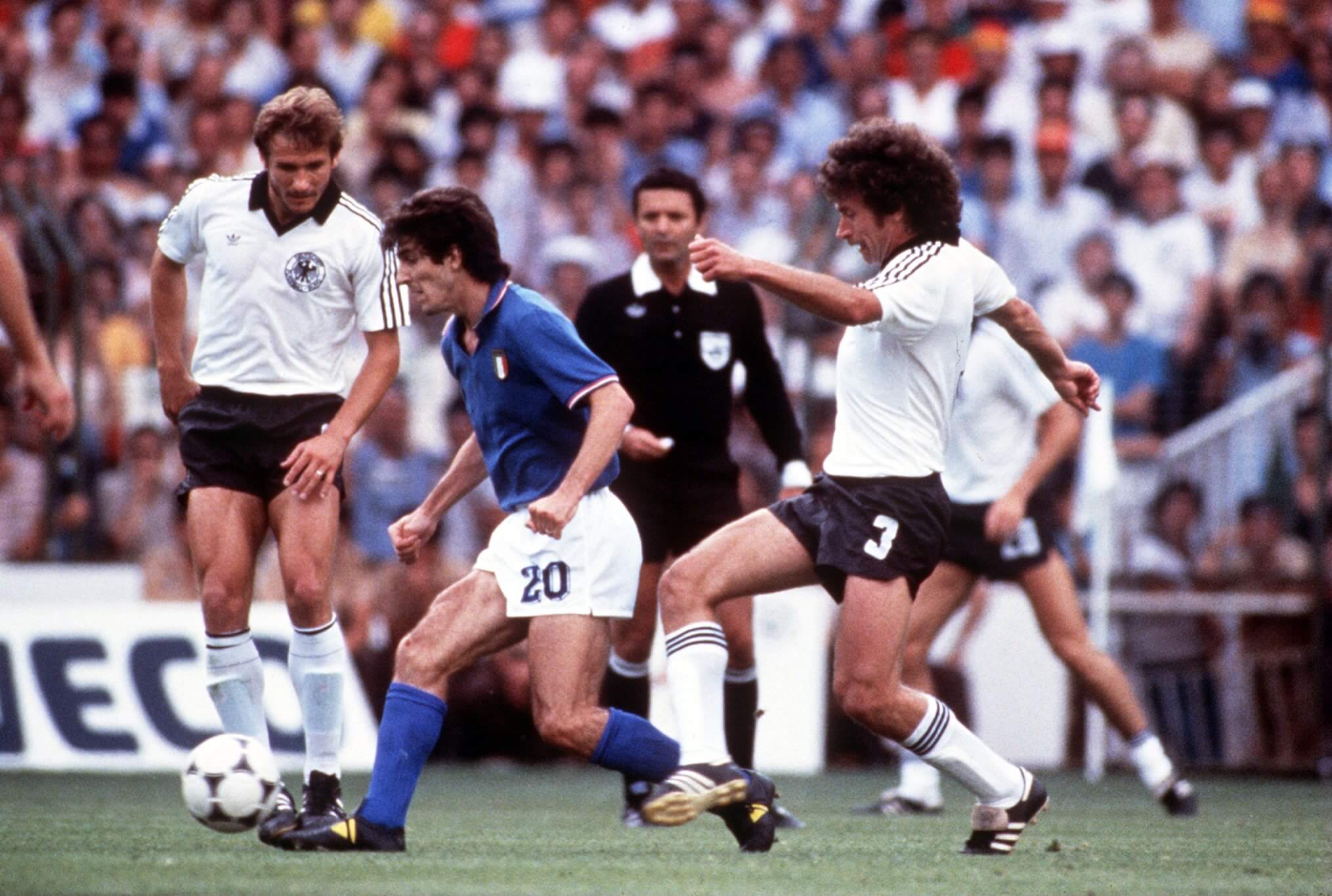
Rossi in action in the final against West Germany (Tony Duffy/ALLSPORT)
He went two years without playing any football, although Juventus nevertheless signed him midway through his ban. He returned to play only three Serie A games before the World Cup, when Bearzot placed great faith in him. Rossi’s rustiness was evident in the group stage, to the extent that he was substituted at half-time in the 1-1 draw with Peru. He didn’t score against Argentina, either, and when Marco Tardelli played an inviting cutback to him early in the fifth game, against Brazil, he produced a complete air-kick. He was still goalless.
But then, out of nowhere, Rossi exploded into life when he firmly nodded home left-back Antonio Cabrini’s cross. Brazil equalised through Socrates after a lovely flowing move.
Then Rossi pounced on Toninho Cerezo’s wayward square pass (hugely reminiscent of Italy’s consolation goal against the same opposition in the 1970 final) and fired home. Brazil equalised again, through Falcao’s excellent strike.
But then, in the second phase of a corner kick, a scuffed shot found its way to Rossi, all alone — aside from team-mate Francesco Graziani. Both went for the ball. Rossi connected for his hat-trick goal.
🇮🇹 Paolo Rossi had his shooting boots on this day in 1982! ⚽️⚽️⚽️#FIFAWorldCup | #OTD pic.twitter.com/rttRfsJBPa
— FIFA World Cup (@FIFAWorldCup) July 5, 2024
After that, he couldn’t stop scoring: he scored both goals in the 2-0 semi-final win over Poland, the first a sidefoot, the second a cushioned header, and then opened the scoring in the final. 3, 2, 1.
Rossi wasn’t tall or powerful, and he didn’t score spectacular goals. In fact, he wasn’t obviously good at anything aside from that old knack of being in the right place at the right time.
Even accounting for his two-year ban, Rossi wasn’t particularly prolific at club level either. The relatively meagre number of Serie A goals he scored is fitting: 82, as if to symbolise the year he won the World Cup, the World Cup Golden Boot, the World Cup Golden Ball, the Ballon d’Or, and World Player of the Year.
Tactics
Bearzot was a more attack-minded coach than many of his predecessors, favouring a front three and a glorious playmaker in Fiorentina’s Giancarlo Antognoni, who recovered from a fractured skull to be fit for the tournament.
Also notable was Bruno Conti on the right, in part because Italy so rarely produce outstanding wingers. He scored Italy’s first goal of the tournament in the group stage, and while he briefly became notable for an incredible open goal miss against Cameroon, he shone in the latter stages, transforming his reputation from a workmanlike wide midfielder to a genuinely world-class attacker.
But in the Italian tradition, Bearzot was a flexible tactician who varied his approach from game to game, attempting to nullify the opponent’s strengths. Perhaps that’s why Italy looked so poor in the group stage against feeble opposition; they needed to be the underdogs.
Bearzot excelled against stronger sides. Against Argentina, he used an aggressive man-marking system with the terrifying Claudio Gentile playing a particularly fierce game to shackle Diego Maradona. Gentile committed six fouls in that game, all on Maradona. When he was booked against Brazil, too, he was suspended for the semi-final against Poland, so in came 18-year-old Giuseppe Bergomi, who performed well.
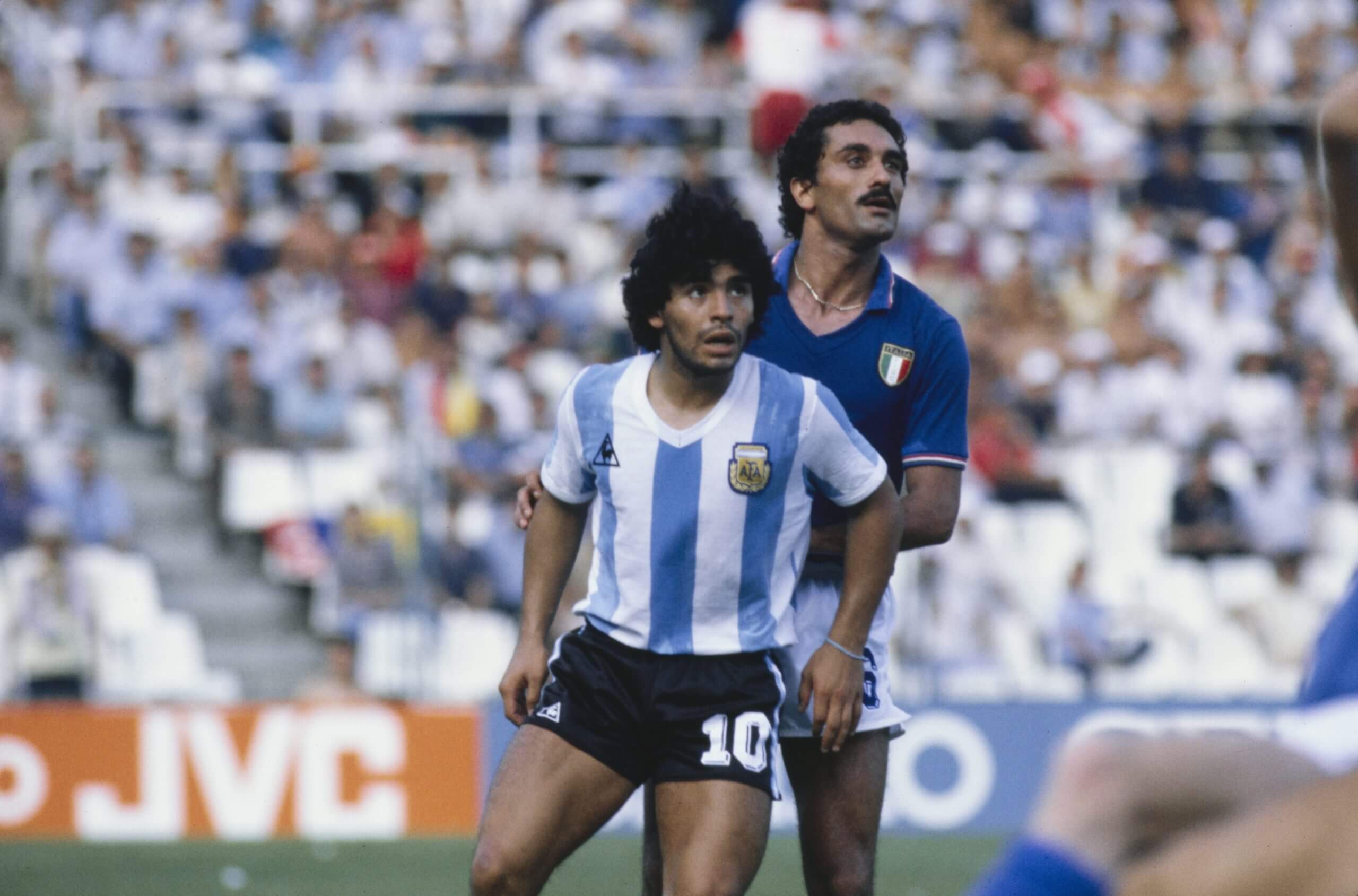
Claudio Gentile shackled Diego Maradona successfully in Italy’s game with reigning champions Argentina (Bongarts/Getty Images)
Therefore, Bearzot was faced with a dilemma about who to play in the final. But then it turned out Antognoni wouldn’t be fit, having limped off with a badly gashed shin against Poland. Bearzot didn’t select a replacement for Antognoni, instead playing both Gentile and Bergomi and switching to a system featuring five defenders in front of 40-year-old goalkeeper Dino Zoff, the side’s captain.
Of course, had Italy failed to beat West Germany, it would have been considered typical Italian over-caution, but Bergomi nullified Karl-Heinz Rummenigge, Gentile did a job on Pierre Littbarski, while the classy Gaetano Scirea swept up behind them and brought the ball forward into attack, including in the move for Italy’s second goal. Scirea’s class on the ball, to a certain extent, made up for Antognoni’s absence.
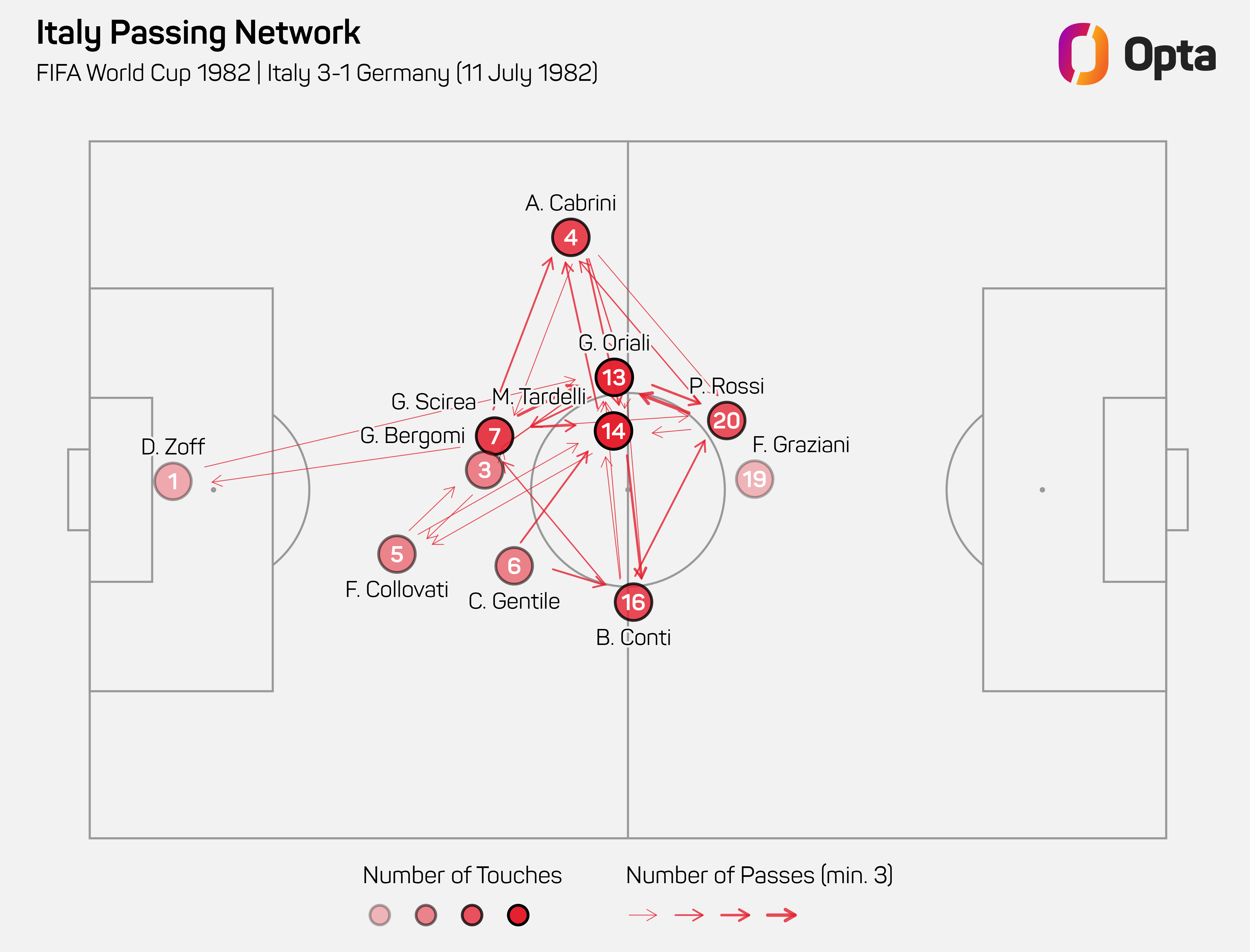
The final
Italy ran out convincing winners over West Germany in a final that was less thrilling than the 3-1 scoreline suggests.
West Germany seemed tired after their semi-final had gone to penalties — the first shootout in a World Cup — after a 3-3 draw with France. They had little support from most neutrals, partly because of Harald Schumacher’s infamous challenge in that semi-final, and partly because of the way they and Austria engineered a mutually convenient result to both progress from the group stage — the infamous Disgrace of Gijon that resulted in FIFA changing the structure of future tournaments so the final group games were always played at the same time.
By half-time, though, you sensed it wasn’t going to be Italy’s day. Already without Antognoni, they then lost Graziani just seven minutes into the game, with his replacement Alessandro Altobelli struggling to get up to speed. They also missed a penalty when the otherwise faultless left-back Cabrini skewed wide after Conti had been brought down.
But Italy were always the better side. Rossi headed the opener from a Gentile cross that bounced up perfectly for him. Tardelli added the second — more on that shortly — before the brilliant Conti teed up Altobelli for the third. Paul Breitner scored a late consolation.
🇮🇹 At Spain 1982, the late Paolo Rossi, who sadly recently passed away, became an @azzurri legend forever as he led Italy past West Germany to secure their first #WorldCup victory since 1938
🏆 Here’s Rossi sharing his memories from that monumental day pic.twitter.com/6O0UGB00Jq
— FIFA World Cup (@FIFAWorldCup) December 18, 2020
The defining moment
Oddly, considering the latter stages were really all about Rossi, it was Tardelli who stole the limelight for the most memorable moment of Italy’s tournament.
His goal to put Italy 2-0 up in the final, ending a patient passing move by twisting onto his left foot and thumping the ball home, on the slide, was followed by one of football’s most famous celebrations, with Tardelli sprinting to nowhere in particular, screaming ‘gol!’.
“I was born with that scream inside me,” he said later. “That was just the moment it came out.”
🇮🇹🏆 When Tardelli secured the #FIFAWorldCup for Italy!#OTD | @Azzurri_En pic.twitter.com/bY2QgJQXDw
— FIFA World Cup (@FIFAWorldCup) July 11, 2024
Considered a runner and a scrapper going into the tournament, similar to how Italy’s current manager, Gennaro Gattuso, was spoken about in his playing days, this World Cup showed Tardelli offered technical quality, too, and he was probably the best player in the final.
Were they definitely the best team?
The neutral’s favourites were unquestionably Brazil, who played marvellous attack-minded football in a tournament largely lacking quality. The unfortunate striker Serginho was often blamed for their inability to win the tournament, but the real problem was the defence. They lost to Italy thanks to three Rossi goals, and on each occasion, it was due to a serious defensive lapse.

Tardelli’s celebration is an iconic moment of World Cup history (Duncan Raban/Allsport/Getty Images)
Their lack of quality at the back was obvious in 1970, but it didn’t prove costly; now it did. The defeat by Italy, claimed Zico, was ‘the day football died’. But Brazil were fundamentally flawed, only keeping one clean sheet, against minnows New Zealand.
Granted, Italy only kept two clean sheets themselves, both against Poland. Still, Italy defeated the two South American giants impressively, and were comfortable in the semi-final and final. Ultimately, Italy were considered worthy winners.
